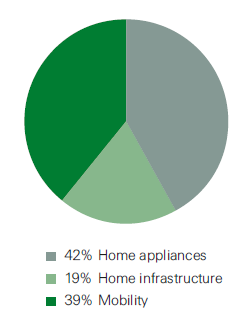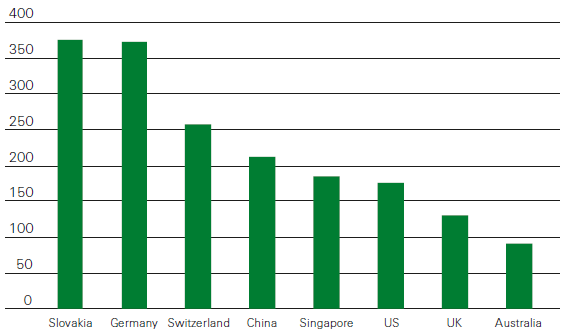The COyou2 Programme
2 268
COyou2 subsidies granted to our employees in 2014
Reducing our own CO2 emissions is one of four pillars of our climate change strategy. In 2007, we launched the COyou2 Programme because we wanted to make our commitment more tangible for our employees and help them to become more aware of climate change. The programme offers subsidies for a range of investments through which our employees can reduce their own carbon footprints. To our knowledge, it was the first global corporate initiative of its kind when we launched it.
The investment options eligible for subsidies are clearly specified in the programme. Some of them are supported at all our locations, while others vary to account for regional differences in climate, living conditions etc. Our subsidies cover 50% of the investment amount up to a locally determined maximum allowance. The programme is open to all regular employees who have successfully completed their probation period and have been with Swiss Re for a minimum period of time (currently three months).
In the first seven years of its existence, the programme was a resounding success: In total, we granted more than 9 000 subsidies. In view of this, we decided to start a new seven-year cycle, running from 2014 until 2020, for which all our regular employees have a new subsidy allowance. In 2014, we granted a total of 2 268 subsidies.
COyou2 payouts in 2014, by category

Amongst the largest Swiss Re locations, uptakes per employee were highest in Slovakia, Germany and Switzerland. Our office in Slovakia has witnessed particularly strong growth recently and many new employees made use of the opportunity to claim subsidies in 2014. In Europe, in general, mobility is a popular category, with bicycles the most common type of subsidy.
China is another location that has seen strong growth and, consequently, a high rate of subsidies. Energy efficient home appliances were particularly popular there, as elsewhere in Asia.
In the US there was a spike in subsidies for home energy audits and installations of windows and doors following the cold spell between December 2013 and April 2014. Home appliances and more expensive home infrastructure subsidies were both popular subsidy categories across the Americas region.
Number of COyou2 payouts in 2014, per 1000 employees

For more information see COyou2 programme